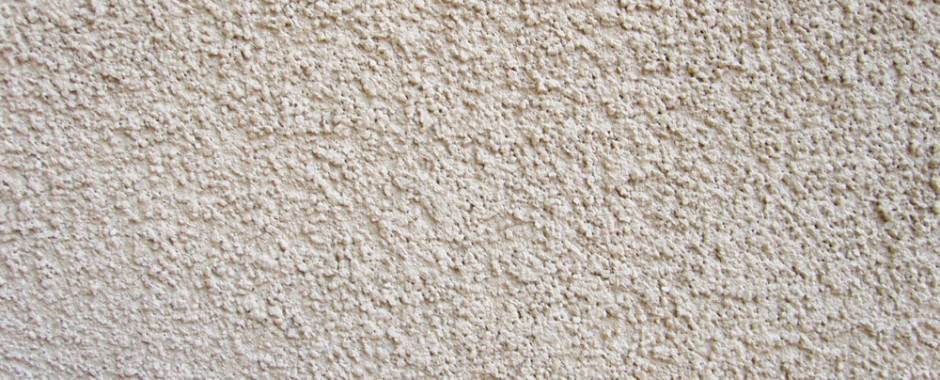
Smooth, troweled finish (sometimes called a sand or float finish), possibly scored to resemble ashlar masonry units. Scoring may be incised to simulate masonry joints, the scored lines may be emphasized by black or white penciling, or the lines may simply be drawn or painted on the surface of the stucco. Roughcast, Skip Trowel, Stipple and Slick finish is also used as an overall stucco finish.
A wide variety of decorative surface textures may be found on revival style stucco buildings, particularly residential architecture. Some of the more picturesque surface textures include: English Cottage or English Cotswold finish; sponge finish; fan texture; adobe finish, and Spanish or Italian finish.
The most common early-twentieth century stucco finishes are often found on bungalow-style houses, and include: spatter or spatter dash (sometimes called roughcast, harling, or wet dash), and pebble-dash or dry dash. The spatter dash finish is applied by throwing the stucco mortar against the wall using a whisk broom or a stiff fiber brush, and it requires considerable skill on the part of the plasterer to achieve a consistently rough wall surface. The pebble-dash or dry dash finish is accomplished manually by the plasterer throwing or “dashing” dry pebbles, onto a coat of stucco freshly applied by another plasterer. The pebbles must be thrown at the wall with a scoop with sufficient force and skill that they will stick to the stuccoed wall. A more even or uniform surface can be achieved by patting the stones down with a wooden float. This finish may also be created using a texturing machine.
